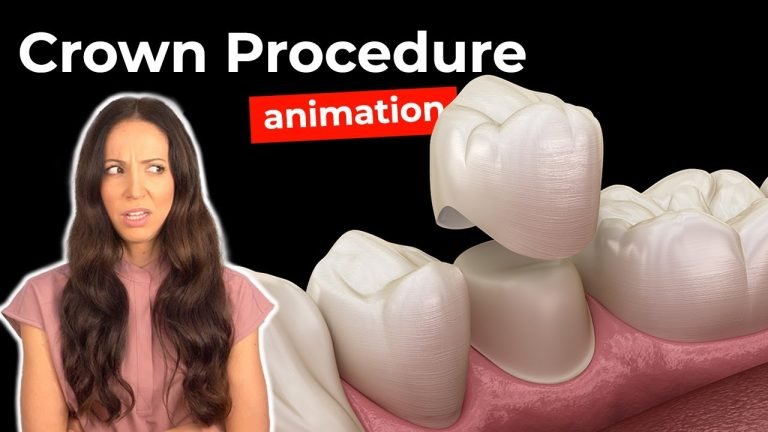Timeframe for Dental Crown Placement: What to Expect

Are you considering getting dental crowns but unsure about the time commitment? Whether it's for restoring a damaged tooth or for cosmetic reasons, the process of getting dental crowns typically takes two to three visits to the dentist. In this article, we'll explore the step-by-step process of getting dental crowns, from the initial consultation to the final placement, so you can have a better understanding of what to expect. So, how long does it really take to put crowns on teeth? Let's find out.
How much time does it take to put a crown on a tooth?
Getting a crown put on a tooth typically takes around 20 minutes, as the dentist bonds the crown to the tooth using dental cement. However, if there are multiple adjustments needed for a proper fit, the process can take 30 minutes or longer. The dentist will ensure that the crown is securely and comfortably placed before completing the procedure.
The process of having a crown put on a tooth usually takes about 20 minutes, with the dentist using dental cement to bond the crown in place. However, if there are issues with the fit, the procedure can take 30 minutes or more. The dentist will make any necessary adjustments to ensure the crown is securely and comfortably placed before finishing the process.
Is getting a crown painful?
Getting a crown is not a painful process. The dentist will ensure the tooth and surrounding gum tissue are numb before beginning the procedure. After the anesthesia wears off, some patients may experience discomfort or sensitivity, but the overall process is not painful.
Is getting a crown more painful than getting a filling?
When it comes to dental procedures, pain should not be a concern. Whether you're getting a crown or a filling, our goal is to ensure a comfortable experience for our patients. Rest assured, we prioritize your comfort and use the latest techniques to minimize any discomfort during your treatment. So, whether it's a filling or a crown, you can expect a pain-free experience at our practice.
At our dental office, we prioritize your comfort during any treatment, whether it's a filling, crown, or root canal. Our team is dedicated to using advanced techniques and technology to minimize any discomfort and ensure a pain-free experience for our patients. So, rest easy knowing that you can expect a comfortable and painless experience, regardless of the dental procedure you're receiving.
Understanding the Process: Step-by-Step Guide to Dental Crown Placement
If you're considering getting a dental crown, it's important to understand the step-by-step process. First, your dentist will prepare the tooth by removing any decay and shaping it to hold the crown. Next, they will take an impression of the tooth to create a custom-fit crown. While you wait for the permanent crown to be made, a temporary one will be placed. Finally, the permanent crown will be cemented into place, restoring the tooth's strength and appearance. Understanding this process will help alleviate any concerns and ensure a successful dental crown placement.
Effortless Recovery: Navigating the Timeframe After Dental Crown Placement
After dental crown placement, it's important to allow time for effortless recovery. Following the procedure, patients should expect some mild discomfort and sensitivity, but these symptoms typically subside within a few days. During this timeframe, it's essential to stick to soft foods and maintain good oral hygiene to ensure a smooth recovery. Additionally, any concerns or unexpected symptoms should be promptly addressed with your dentist to avoid any complications. By navigating the post-placement timeframe with care and attention, patients can ensure a successful and effortless recovery after dental crown placement.
Proactive Care: Maintaining Your Dental Crown for Long-Term Success
Maintaining your dental crown is essential for long-term success and optimal oral health. A proactive approach to care can prevent potential complications and ensure the longevity of your crown. Regular dental check-ups and cleanings are crucial in monitoring the condition of your crown and addressing any issues before they escalate. By staying proactive, you can avoid costly and invasive procedures in the future.
In addition to regular dental visits, practicing good oral hygiene at home is key to maintaining your dental crown. Brushing twice a day and flossing daily can help prevent plaque buildup and protect the integrity of your crown. Using a fluoride toothpaste and mouthwash can further strengthen your teeth and reduce the risk of decay around the crown. By incorporating these habits into your daily routine, you can actively contribute to the longevity of your dental crown.
Taking proactive care of your dental crown also involves being mindful of your eating habits. Avoiding hard or sticky foods can help prevent damage to the crown and reduce the risk of dislodgement. Additionally, wearing a mouthguard during physical activities or sports can protect your crown from potential trauma. By being proactive in your oral care routine and lifestyle choices, you can promote the long-term success of your dental crown and enjoy a healthy, confident smile for years to come.
In conclusion, the process of getting crowns on your teeth can vary in length depending on individual circumstances. However, on average, it usually takes two to three visits to the dentist over the course of a few weeks. It is important to consult with your dentist to get a more accurate timeline for your specific situation. With proper care and maintenance, dental crowns can provide a long-lasting solution to improve the appearance and functionality of your teeth.
